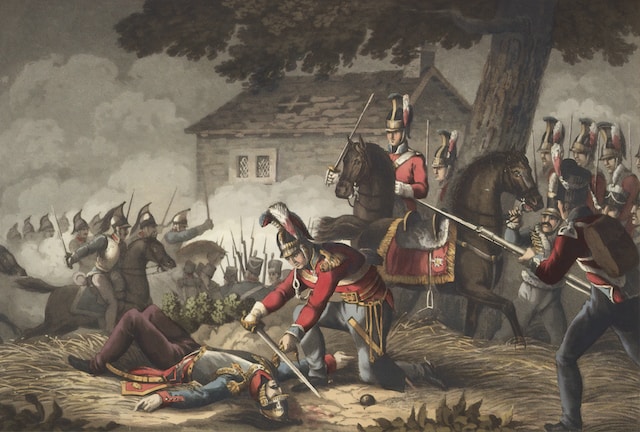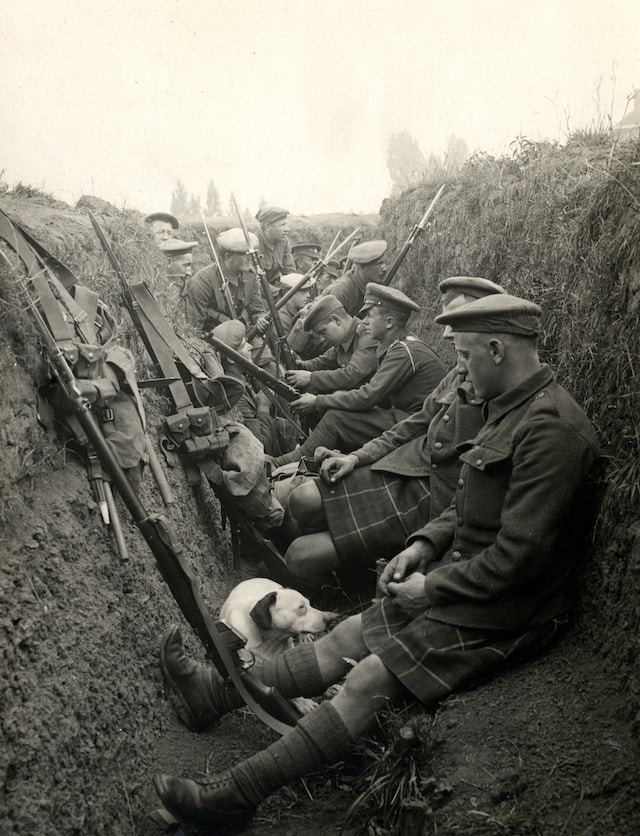
The sun shone down on the dusty streets of Paris, casting a warm glow over the bustling city. It was the year 1789, and tensions were mounting between the aristocracy and the common people. Marie, a young servant girl, hurried along the cobblestone streets, her heart pounding with fear.
She had been raised in poverty, struggling to make ends meet for her family. But despite her humble origins, Marie had always harbored a fierce determination to rise above her station in life.
As she walked, she caught sight of a group of revolutionaries gathered on the corner, their faces twisted with anger. She knew that they were plotting to overthrow the monarchy, to uproot the centuries-old feudal system that had kept the poor oppressed and downtrodden for generations.
Marie hesitated for a moment, then took a deep breath and approached the group. She had never been one to shy away from a fight, and she knew that if she could help bring about change, it would be worth the risk.
Over the next few weeks, Marie threw herself into the thick of the revolution, joining the ranks of the rebels and fighting for justice and equality. She witnessed the fall of the Bastille, the rise of the National Convention, and the execution of King Louis XVI.
Through it all, Marie never lost sight of her ultimate goal, to make a better life for herself and her loved ones. Finally, as the Revolution reached its climax, she stood on the steps of the National Convention and raised her fist in triumph.
The people of France had toppled their oppressors, and the nation would never be the same again. And as Marie looked out over the sea of faces before her, she knew that she had played her part in history.
A Guide to Historical Fiction Writing
The gripping story above showcases the power and allure of historical fiction writing. Masters of the genre transport readers to bygone eras, crafting narratives that are as riveting as they are informative. In the pages of historical fiction novels, readers can experience everything from grand battles to intimate love stories.

All these, set against the backdrop of a world that is both familiar and foreign. In the following paragraphs, we’ll delve deeper into this captivating genre, exploring what makes it so unique and why it continues to captivate readers of all ages and backgrounds.
Understanding Historical Fiction Writing
Historical fiction intertwines factual elements from the past with fictional narratives, blurring the line between history and imagination. It creates a vivid and immersive experience for readers by depicting historical events, places, and figures within a fictional framework. Balancing historical accuracy and creative storytelling is crucial, as the genre relies on a delicate fusion of facts and fiction.
Thorough research is the cornerstone of successful historical fiction writing. Authors delve into primary and secondary sources, such as historical documents, diaries, letters, and scholarly works, to gather accurate information about the chosen time period or event. The goal is to immerse oneself in the historical context, capturing the essence of the era and incorporating authentic details that resonate with readers.
Steps to Writing Historical Fiction
Whether you’re an aspiring author or a seasoned writer, these tips will help you craft a compelling story that transports readers to a different time and place.
Choose a historical period or event
Selecting a specific historical period or event is a pivotal decision in historical fiction writing. Authors should consider their interests, passions, and the potential appeal of the chosen era to readers. Exploring lesser-known historical events or figures can offer a fresh perspective and breathe new life into the narrative.
Conduct a thorough research
Immersing oneself in the research process is crucial for creating a believable historical world. Authors should consult various sources, from academic books and articles to online databases and archives. Deep understanding of the social, political, cultural, and technological aspects of the chosen era enables writers to accurately depict the setting and characters.
Develop compelling characters
Character development is a vital aspect of historical fiction writing. Authors must strike a balance between historical figures and fictional characters, creating relatable protagonists that embody the spirit of the time. Portraying authentic emotions, motivations, and struggles allows readers to connect with the characters on a deeper level.
Craft a captivating plot
The plot of a historical fiction novel should seamlessly blend historical events with fictional elements. Authors must identify key historical conflicts and incorporate them into the narrative arc. By intertwining fictional subplots and characters’ journeys with real historical events, writers can engage readers and provide a fresh perspective on the past.

Writing Techniques for Historical Fiction
Writing techniques are the building blocks of any good story, and for historical fiction, they are essential in creating truly immersive experiences for readers. Read on as we unravel the art of writing in historical contexts and discover how to infuse historical accuracy with creative storytelling.
Creating vivid settings and descriptions
Transporting readers to a different time and place relies on rich and evocative descriptions. Authors should paint detailed pictures of the surroundings, architecture, landscapes, clothing, and daily life, immersing readers in the sights, sounds, and smells of the era.
Dialogue and language choices in historical context
Capturing the language and speech patterns of the historical period is essential for authenticity. Writers must research the vocabulary, idioms, and linguistic nuances of the era, while ensuring the dialogue remains accessible and engaging for modern readers.
Balancing exposition and action
Finding the right balance between exposition and action is crucial in historical fiction. While it is important to provide historical context and background, excessive exposition can bog down the narrative. Authors should strive for a dynamic blend of action, dialogue, and historical information to maintain the readers’ interest.
Handling anachronisms and anachronistic language

Avoiding anachronisms—elements that do not belong to the chosen historical period—is vital for maintaining credibility. Writers should be diligent in their language choices, ensuring that words, phrases, and cultural references are appropriate for the era depicted in the story.
Editing and Revision
During the editing process, authors must meticulously review their work for historical accuracy and consistency. Fact-checking, cross-referencing sources, and consulting experts can help eliminate errors and discrepancies that might disrupt the readers’ immersion in the historical world.
Obtaining feedback from beta readers, writing groups, or even historical experts can provide valuable insights and perspectives. Constructive criticism can help authors refine their characters, plot, and historical accuracy, ensuring a more polished final product.
Revision is an opportunity to refine character development, strengthen plot structure, and enhance the overall coherence of the story. Paying attention to pacing, plot twists, and character arcs can elevate the narrative and create a truly immersive experience for readers.
A captivating blend of fact and fiction
Historical fiction offers a captivating blend of fact and fiction, enabling readers to connect with the past in a unique and engaging way. By understanding the elements of historical fiction, conducting thorough research, and employing effective writing techniques, aspiring authors can bring history to life, creating memorable stories that resonate with readers. Embrace the challenge, unleash your creativity, and embark on a remarkable journey through time and imagination.